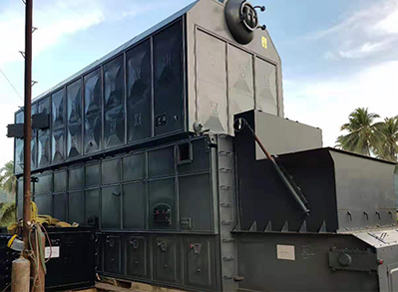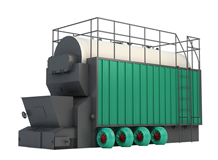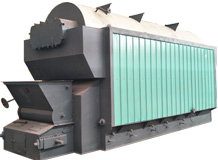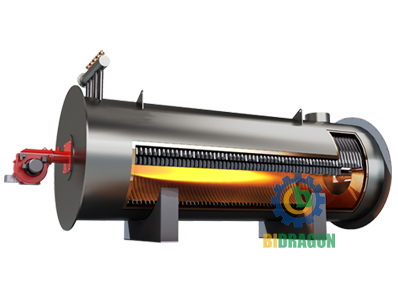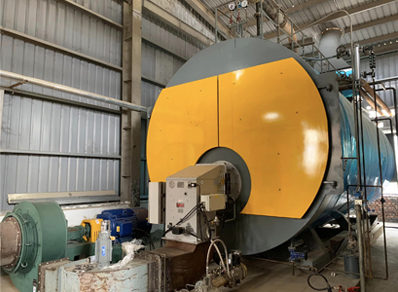
Biomass boilers: a sustainable heating solution
Against the backdrop of a growing global interest in sustainable energy solutions, biomass boilers have emerged as a popular and environmentally friendly alternative to traditional heating systems. This article will take an in-depth look at what biomass boilers are, how they work, what different types are available and the many benefits they offer, highlighting their potential to revolutionize the heating industry.
What is a biomass boiler
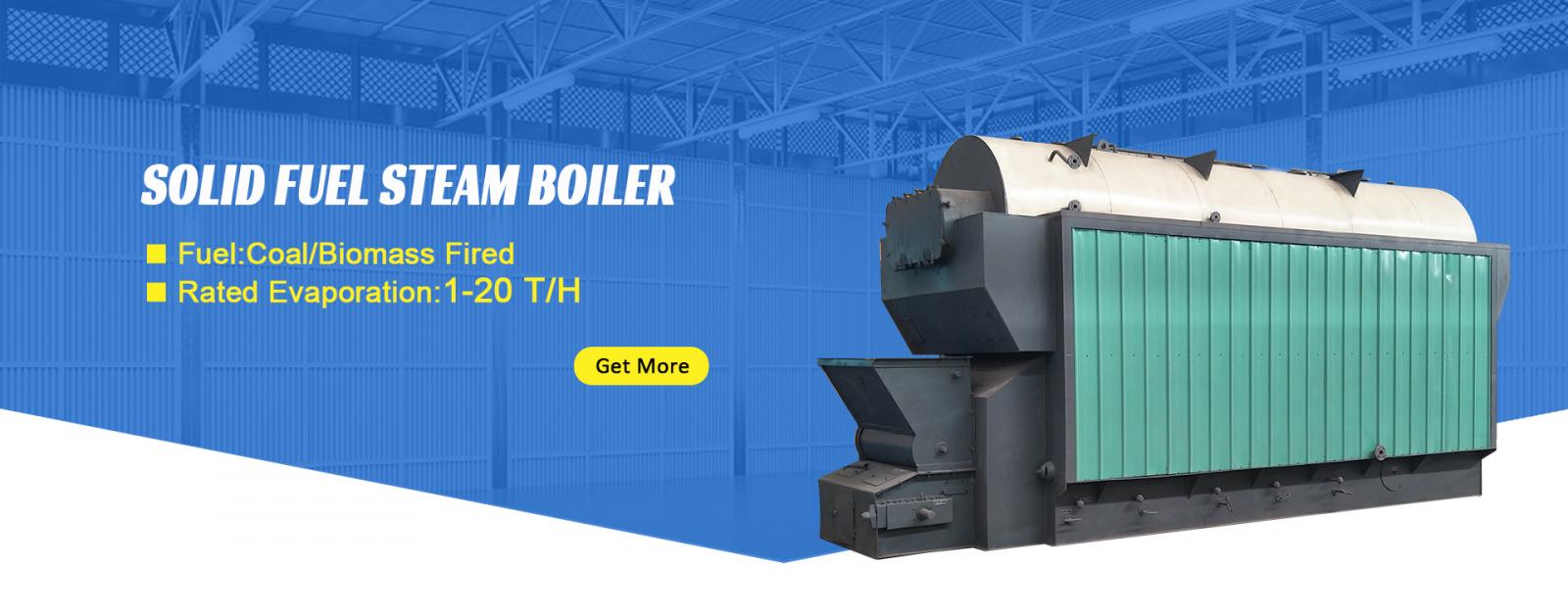
A biomass boiler is similar to the familiar traditional gas boiler. The key difference, however, is that instead of using natural gas or oil, it burns sustainably sourced wood pellets. This shift in fuel source opens up new possibilities for environmental protection.
How a biomass boiler works
- Fuel supply
The biomass fuel enters the combustion chamber through a conveying system (e.g. screw conveyor or chain conveyor). The type of fuel determines the conveying method, e.g. pellet fuel can be fed automatically, while bulky fuel may require manual or mechanical feeding.
- Combustion process
Inside the combustion chamber, the fuel is mixed with air and burned, releasing heat. Layer combustion, chamber combustion or fluidized bed combustion is usually used to improve combustion efficiency and reduce emissions:
- Layer combustion: Fuel is burned layer by layer on the grate, which is suitable for wood chips, straw and other bulky fuels.
- Chamber combustion: the fuel is burned at high temperature in the furnace chamber, commonly used for pellet fuels.
- Fluidized bed combustion: the fuel is fully mixed and combusted with high-temperature air in the fluidized bed, with high combustion efficiency, applicable to a variety of biomass fuels.
- Heat transfer
The high-temperature flue gas produced by combustion flows through the heat exchanger of the boiler (e.g., water pipe, flue pipe or economizer) and transfers the heat to the boiler water, turning the water into high-temperature hot water or steam.
- Flue gas treatment
The flue gas after combustion passes through dust removal equipment (e.g. cyclone separator, bag filter or electrostatic precipitator) to remove particles, and passes through desulphurization and denitrification devices to reduce pollutant emissions to meet environmental requirements.
- Heat supply or power generation
- Heat supply: hot water or steam generated by the boiler can be used for heating, industrial heating or production process needs.
- Power generation: If the boiler is used for biomass power generation, the steam will drive the turbine to generate electricity.
The type of biomass heating system
Fully automated biomass boilers
Fully automatic biomass boilers are usually the most efficient type of biomass boiler. Wood (usually in the form of pellets or chips) is automatically transported from a large hopper or silo (sometimes storing up to a year's worth of fuel) through a screw conveyor system to the combustion chamber of the boiler. This type of boiler is a modern heating system designed to provide efficient, sustainable energy from organic materials such as wood pellets, wood chips or agricultural waste. They are becoming increasingly popular due to their low environmental impact.
Automation features make the process of operating a biomass boiler much simpler and significantly more efficient. Once the fuel is loaded into the storage system, the boiler automatically feeds the fuel into the combustion chamber, regulates the air supply, and manages the combustion process to ensure optimal performance. The system also automatically removes the ash produced by burning biomass, reducing the need for manual intervention and lowering maintenance costs.
Fully automated biomass boilers can be used to heat homes, businesses and industrial facilities of all sizes and can be integrated into existing heating systems. While their initial cost may be higher than conventional heating systems, the fuel cost savings and environmental benefits make them an attractive option in the long term, especially if there is a convenient local supply of biomass fuel.
Combined heat and power (CHP) biomass systems
Biomass can also be used to fuel CHP installations, which generate both heat and electricity. However, CHP units are very costly for small domestic and commercial premises and more economical ways of generating electricity exist. CHP systems are more suitable for larger buildings and may be eligible for the Boiler Upgrade Scheme (BUS) given their ability to generate both electricity and heat.
Semi-automatic industrial biomass boilers
Semi-automatic industrial biomass boilers cost less than fully automatic boilers, but require more input from the system operator and are more suitable for larger facilities such as farms and large properties. They are equipped with a large attached hopper that can hold a certain amount of fuel, but require more frequent manual refueling. These boilers have a variety of operating modes such as full power, reduced power and dormant modes and are equipped with a specially designed electronic control system.
Semi-automatic industrial biomass boilers strike a balance between manual operation and automation, providing a cost-effective and sustainable heating solution for large facilities. As with other biomass boiler solutions, these boilers use organic fuel sources such as wood chips, pellets or agricultural waste, reducing reliance on fossil fuels.
While they require manual fuel additions or periodic fuel management interventions, they still automate basic functions such as air control, combustion optimization and ash removal. This significantly reduces operational management efforts compared to a fully manual system. Semi-automated biomass boilers are ideal for industries that are looking for a more sustainable energy solution but do not want to incur the high initial investment of a fully automated system.
Benefits of biomass boilers

Affordable fuel
Fuel for biomass boilers is usually much cheaper than other alternative fuel sources. To get the best price, look for local suppliers who can deliver in bulk, and generally speaking, logs tend to be cheaper than pellets. The cost of fuel for a biomass boiler is a much more economical option when compared to electricity and coal.
Low carbon options
The amount of carbon dioxide released when wood is burned is the same as the amount of carbon dioxide absorbed by the plant over months or even years of growth. This process is sustainable as long as new plants replace those used as fuel. Compared with fossil fuels, biomass is a greener option that helps reduce carbon emissions and combat climate change.
Helps reduce landfill
A large amount of the waste we produce is biodegradable plant matter, which can be utilized more effectively in a biomass boiler. Biomass energy is often able to utilize waste that would otherwise decay in landfills, reducing the pressure on landfills as well as resource utilization of waste.
Conclusion
Biomass boilers have a unique working principle, a variety of system types and significant advantages. Whether considering its low-carbon characteristics from an environmental perspective or analyzing its fuel cost advantages on an economic level, biomass boilers show great potential. Whether you are a domestic user or a commercial facility operator, carefully evaluate the feasibility of a biomass boiler when considering your heating needs. Choosing a biomass boiler will not only contribute to environmental protection, but may also realize considerable cost savings in long-term operation, opening up a new era of green, economical heating.

